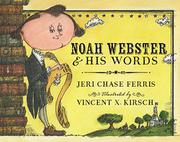I love kidblog.org. I love blogging, and even more than that, I love watching small bloggers get excited about writing for a real audience. Kidblog is a free site where teachers can create class blogs. Every student can have their own blog, their own special place to write, to publish, and to share. Kidblog gives kids a voice, and a place of their own to WRITE.
We began blogging slowly. On my welcome to school letter before school began, I gave out the blog address and passwords and invited students to leave three comments about themselves.
When school began, I taught students what a blog is and what bloggers do to participate effectively in an online community. I sent parents home letters explaining what blogging is with a list of suggestions for good blog posts. (Narratives, book reviews, information about a topic they are learning, poems..etc.)I shared about my life as a reader, a writer and how blogging fits into my world in both of these areas.
I'm reviewing constantly that bloggers write for the public, for EVERYONE in our class to read. With this thought in mind, writers have to be aware of the content they are sharing. We've reviewed what makes a good comment several times this year already. I love that each comment and each post is emailed to me through this site. We've had to discuss how a blog isn't the place to publish a "stair" comment on improvements a writer can make. A blog is a public place to have good conversations about writing, books, and our lives. This is a place to celebrate authors and their venture into digital writing.
Right now blogging is a choice. It's something kids can choose to do at home and sometimes in the classroom. Everyone has had the opportunity to publish one piece, and I'm sure we'll do more together. I do however, like that it remains a choice, because I think that's what keeps it motivating. And that's the big goal... motivation to write, to read, to connect as a community.
I share my enthusiasm for blogging. I love reading others' thoughts on blogs. I get most of my book recommendations through blogs. Many bloggers inspire me as a teacher, a mom, and as a writer myself.
Here are the ways I've used Kidblog this year.
- I post book reviews for kids to see models of quality reviews and to create a buzz in our classroom about great books they can try. I try to end with a good question so students can respond by leaving comments, sharing about their own lives as readers.
- I post small moment stories and pictures of myself as mentor texts for kids. I'm trying to show kids how writers share their lives, their stories.
- Kids have started posting small moment narratives to our blog.
- Kids post book reviews of books they want others to read.
- One student posted about her Egyptian culture and shared what language she can speak. This post inspired another student to post about her African culture and how to say hello in her family's native language.
- During our class read aloud, The Tiger Rising I have been ending with a thick question that I post to the blog. Students are able to go home and answer the question, to start a discussion and deepen understanding of this read aloud.
- Everyone wrote a descriptive paragraph about a haunted house for Halloween. We brought in the laptops and all students got to publish their writing on Kidblog. My email has been busy every night since with comments. Students are reading the pieces and leaving comments that celebrate the authors.
My kid bloggers are getting their feet wet with technology and learning how to build an online community. We still have some work to do. Wednesday when we return, we need to talk about how you don't need three strings of exclamation points in a comment!!!!!!!!!!! :)
Have you used blogging in your classroom? Let me know if you have any tips for our class.

